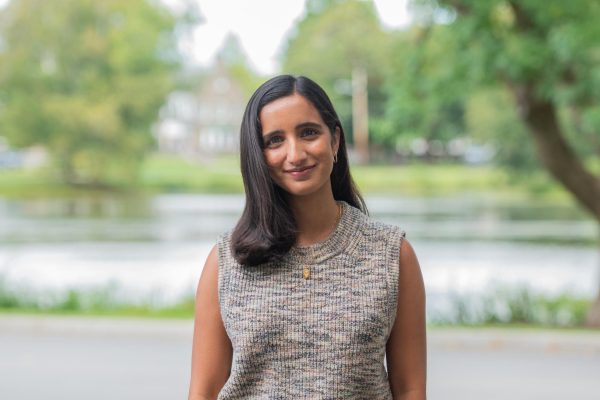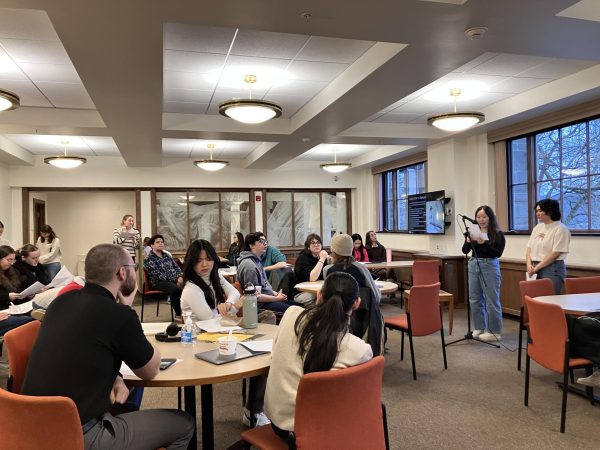Bill Gaskins’ ‘Black Mystery Month’ Exhibition at the Clifford Gallery
For the months of Feb. and March, the art and art history department sponsored a photography exhibit by artist Bill Gaskins entitled “Black Mystery Month.” The exhibit was located in Little Hall at the Clifford Gallery. According to the Colgate website, the photography exhibition “merges particular mysteries of American history through a suite of still-life photographs and accompanying short video.” Gaskins is currently an associate professor in the department of art with a faculty appointment in the American studies program at Cornell University. He has previously taught at Ohio State University, the School of the Art Institute of Chicago and the University of Missouri. An accomplished scholar and artist, his work focuses on African American culture through photography and portraiture.
In an external lecture on Wednesday, March 23, Gaskin spoke to students taking EDUC 440: “Special Topics in Educational Studies” about why society sees higher education as important and how that may align or not align with personal values. Among those students were first-years Meg McClenahan and Cassie Ryan, who spoke to what they enjoyed about the class visit.
“I think the most important thing I took out of the talk that Professor Gaskin gave was that he sees everybody on the same field,” Ryan said. “I think it was really important how he talked about how you don’t need higher education in order to think with your community and gather around a text and create change that way.”
The exhibit included 30 photographs, each a black and white image of a figure that had an impact on African American culture in the United States. There were some quintessential figures in African American history, including Martin Luther King Jr., Thurgood Marshall and John Lewis. Additionally, there were some overlooked persons such as Andrew Young, Barbara Jordan and Audre Lorde. When asked about the decision to represent a mixture of famous and lesser-known figures, Gaskin answered:
“I want people to understand that there are people beyond the usually cited African American people who are local in their legends, but what they did locally had national and international impact.”
Gaskins also said he chose to make the photos black and white because it simplifies things aesthetically.
“I wanted to have something that would be such an aesthetic impact and disrupt your expectations of what a photograph is going to be in a space like this,” said Gaskins.
On each image, there was also a word jumble of white letters that spelled out the subject’s name. Gaskins elaborated on the decision to organize the letters in such a manner:
“One of the reasons they’re jumbled up is to create an experience that requires you to give it more than the average five seconds art is commonly given in a space like this.”
Photos were spaced evenly along all four walls of the gallery, with a few paragraphs about the exhibit and how it came to Colgate between the images. The images were printed with archival pigment print, and most were sized at 36 inches by 44 inches. When asked what she liked about the exhibit, McClenahan observed:
“When you’re first walking around, I was standing very close to the pictures and portraits, and then when you look around from a distance, they become clearer. The closer you are, the more blurry they are, and the letters that are scattered around start to make more sense as you step away.”
Among the paragraphs on the wall was the explanation of the art itself: “This suite of still-life photographs titled ‘Black Mystery Month’ are made to engage attention through their unexpected form and content.”
The exhibit was certainly a fascinating one and seemed to encourage audiences to considering both the art and the meaning behind it. The exhibit at Little Hall closed on Wednesday, March 23 following Gaskin’s lecture.

Maya Karkhanis is a senior from Hillsborough, NJ concentrating in international relations, religion, and Asian studies. She has previously served as an...






